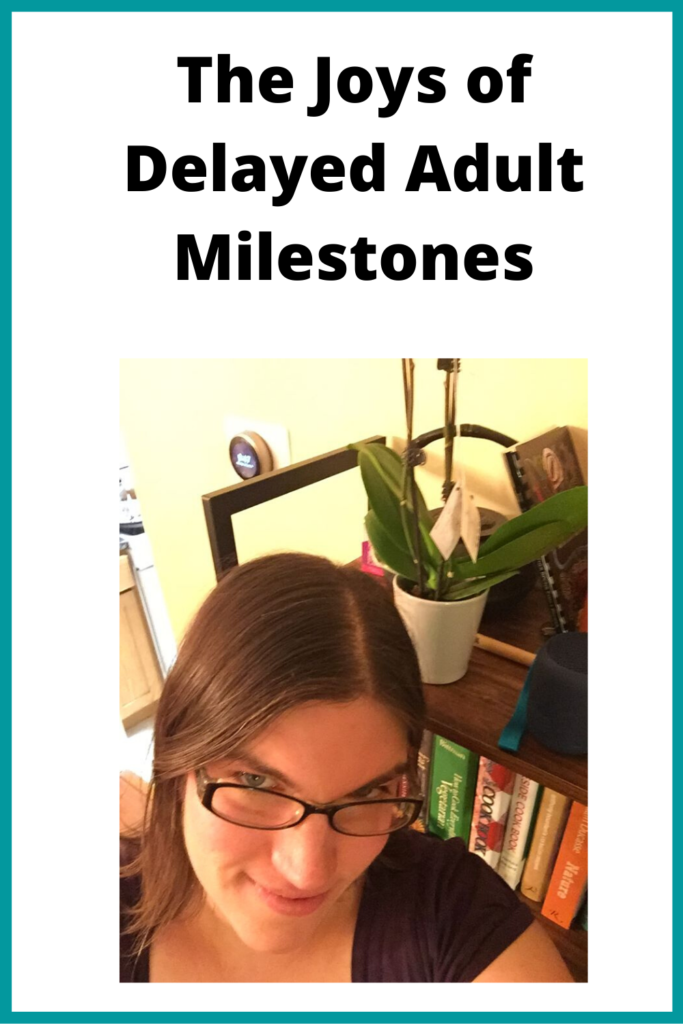
A silver-gray hair flowed from the top of my head down past my ear, ending right at my shoulder. “Huh,” I said, looking in the mirror and shrugging. It’d be cool if it was eventually a skunk stripe like Rogue in X-Men or glittery like Luna Girl in PJ Masks.
Perhaps my ambivalence about gray hair seems strange, considering that women are supposed to hide any sign of aging. But there’s a sense of strange gratitude – I expected a hell of a lot more of them by now. Like many things on my 37th birthday.
I never remember my mom’s hair being brown without chemical assistance. Brown splotches on the white bathroom carpet when I was younger; her trips to the hairdresser when I was older. Her hair started going gray in her mid-20s and was well on its way there by the time she had me at 30. I don’t blame her at all – having a full head of white-silver hair when you haven’t hit your fourth decade is rough. Since then, she’s gone on to embrace it and now rocks a pixie cut with her white hair.
I fully resigned myself to the same hair-dying fate. With my young-looking face, I thought my perceived age would jump from 18 to 40 in the span of a few rapidly graying years. That going gray would signal having grown up. Yet my brown hair remains, a few hairs teasing of a future age.
Other delays on the way to my late 30s are less physical. But they are coming nonetheless, moving forward by my passion, luck, privilege, and sheer stubbornness.
When I was in my teens, I knew – just knew – that I would have a book published before I was 25. Or at least 30. I didn’t meet that goal.
But in June, I had a book come out, a real-life, honest-to-God book. With a cover and table of contents and blurbs and everything. As something I have been working towards for decades in some sense or another, it’s a strange feeling. There’s so much personal history and effort tied up in this object I can hold on my hands. This book, this particular topic, is the summary of a vision and expertise I’ve been developing for years. It’s the sign of what I always associated with being a “real” writer, a “grown-up” writer. Now, I know that’s not true – there are plenty of real writers who have never written a book – but it still carries that symbolism, that weight. Then, once it’s out in the world, where do I go from there?
What do I do with these signs of adulthood when I’m supposed to have been one so long ago already? What do I do with these gray hairs and these personal accomplishments when I both feel too young and too old for them?
The gray hair reminds me of a beautiful woman at my church, Donna, who recently passed away. Her mobility had been declining for years. As she used her walker, then her wheelchair, I adored watching her husband support her in unabashed love. Around the time that she switched to the wheelchair, she dyed a streak of her white hair bright purple. Knowing her, it wasn’t an attempt to recapture her youth or be trendy. It was an acknowledgment of what she could still be, made possible by her circumstance – beautiful, vibrant. (I suspect it also had something to do with her granddaughter.) I’ve dyed my hair purple in the past. But as I wasn’t committed enough to bleach it, it came out nearly black with a sheen of violet. My natural color made it impossible for the dye to shine out. When those gray hairs one day cover my whole head, I want to be like Donna – embracing their possibility, letting the purple be seen.
So too shall I embrace the possibilities of being a published author. Perhaps the book is a a coming of age as a writer. But then you need to do something with that grown-up status. I’m not sure what they are going to be yet, but I’m hoping to find ways to have the knowledge I collected in my book have a long lifetime beyond it. To make the most of this milestone instead of worrying that it’s finally arrived.
In our children, every day we see the challenges of growing up. Yet that’s what we’re still doing as adults – growing up. Rather than hide from or deny it, it’s best to embrace its possibilities.